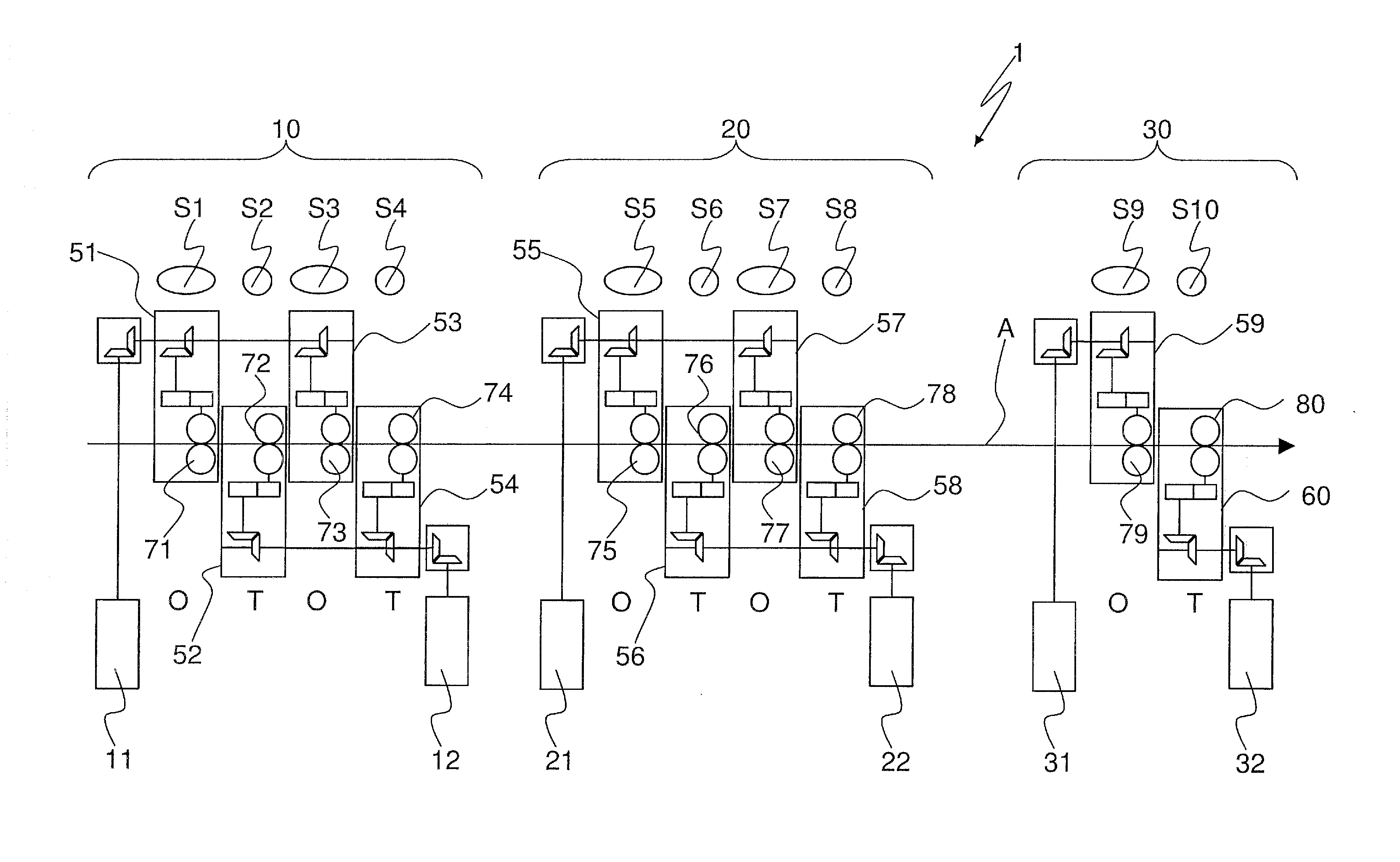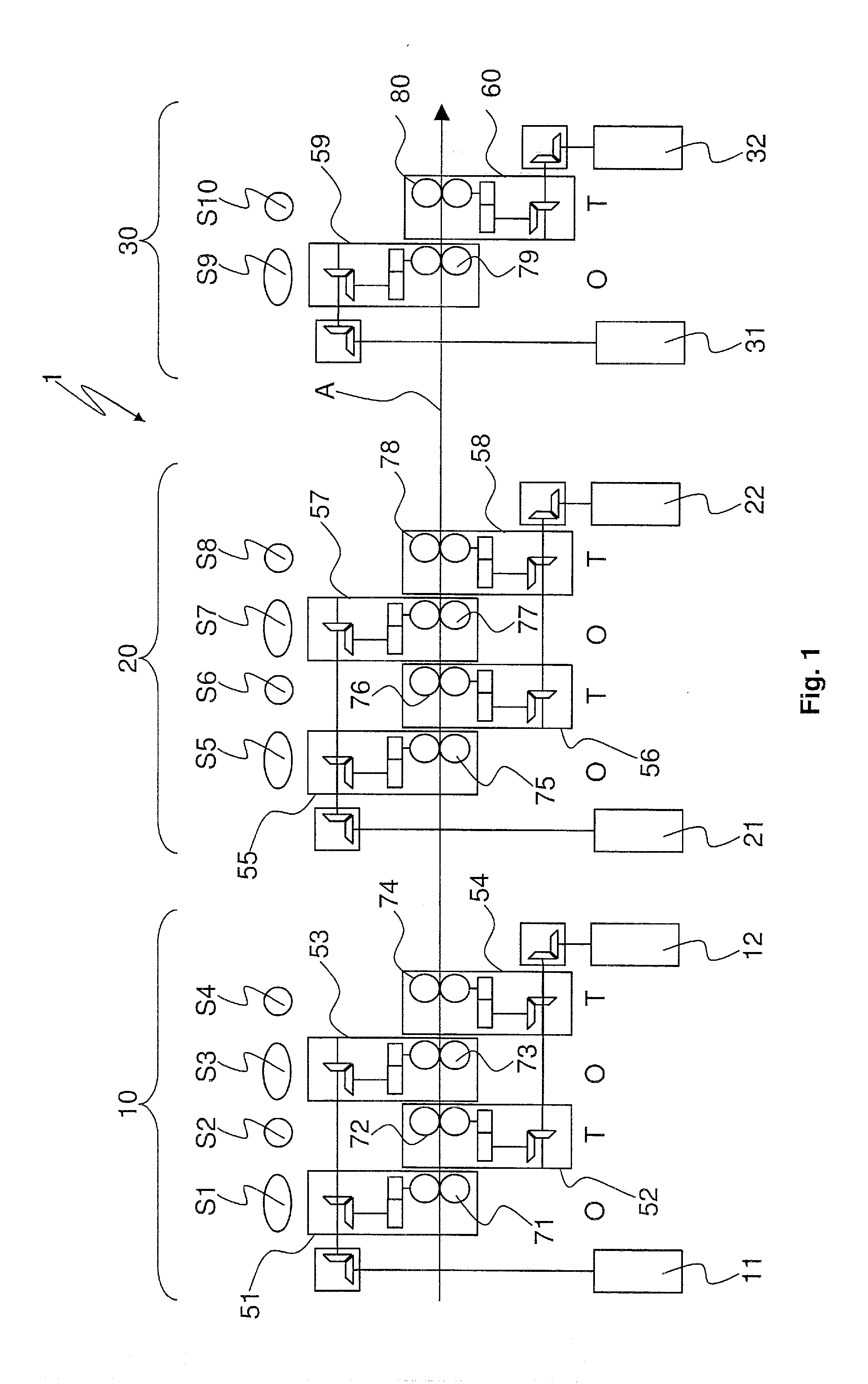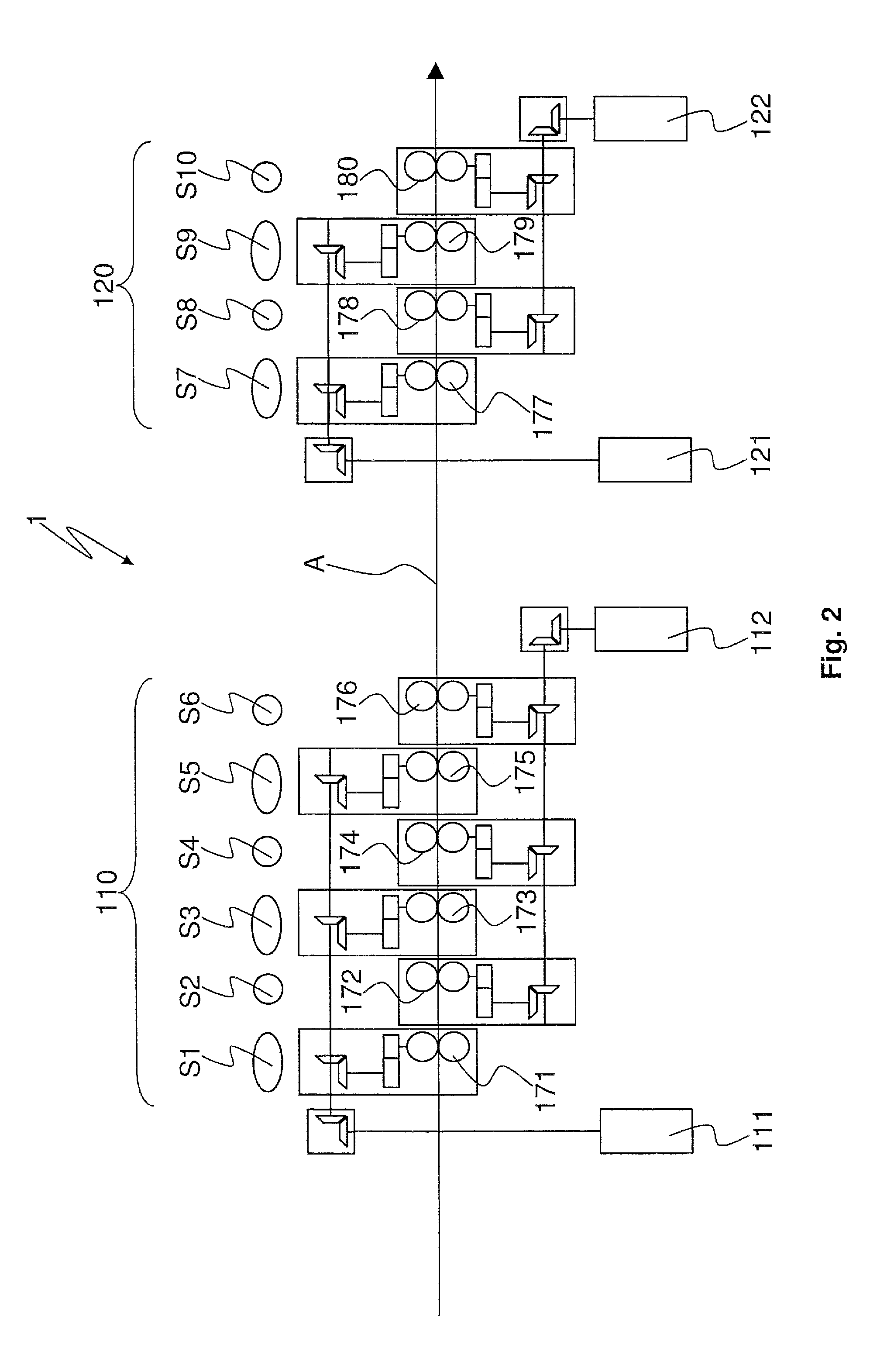High-speed wire rod rolling apparatus and method
a wire rod and high-speed technology, applied in the direction of metal rolling arrangements, cantilevered roll stands, manufacturing tools, etc., can solve the problems of affecting the quality of finished products, so as to achieve accurate control of the dimensional tolerances of finished products
- Summary
- Abstract
- Description
- Claims
- Application Information
AI Technical Summary
Benefits of technology
Problems solved by technology
Method used
Image
Examples
Embodiment Construction
[0033]In particular, FIG. 1 shows a kinematic diagram of the wire rod rolling apparatus 1 according to the invention, hereinafter also defined as finish block or conventionally called wire rod block.
[0034]Three distinct and mutually independent rolling units 10, 20, 30 are provided therein. The first unit 10, considered in the rolling direction, carries out the first four rolling steps, with a rolling sequence in which the gauge section is oval-round-oval-round. Hereinafter, for the sake of brevity, the terms “round or oval” means gauge with round or oval section.
[0035]One motor is provided for actuating the two round steps, arranged in even positions, and one motor, independent from the first, is provided to actuate the two oval steps which occupy the odd positions. The second unit 20 carries out four rolling steps with an oval-round-oval-round rolling sequence. One motor is provided for actuating the two round steps, arranged in even positions, and one motor, independent from the ...
PUM
| Property | Measurement | Unit |
|---|---|---|
| temperature | aaaaa | aaaaa |
| temperature | aaaaa | aaaaa |
| powers | aaaaa | aaaaa |
Abstract
Description
Claims
Application Information
 Login to View More
Login to View More - R&D
- Intellectual Property
- Life Sciences
- Materials
- Tech Scout
- Unparalleled Data Quality
- Higher Quality Content
- 60% Fewer Hallucinations
Browse by: Latest US Patents, China's latest patents, Technical Efficacy Thesaurus, Application Domain, Technology Topic, Popular Technical Reports.
© 2025 PatSnap. All rights reserved.Legal|Privacy policy|Modern Slavery Act Transparency Statement|Sitemap|About US| Contact US: help@patsnap.com



